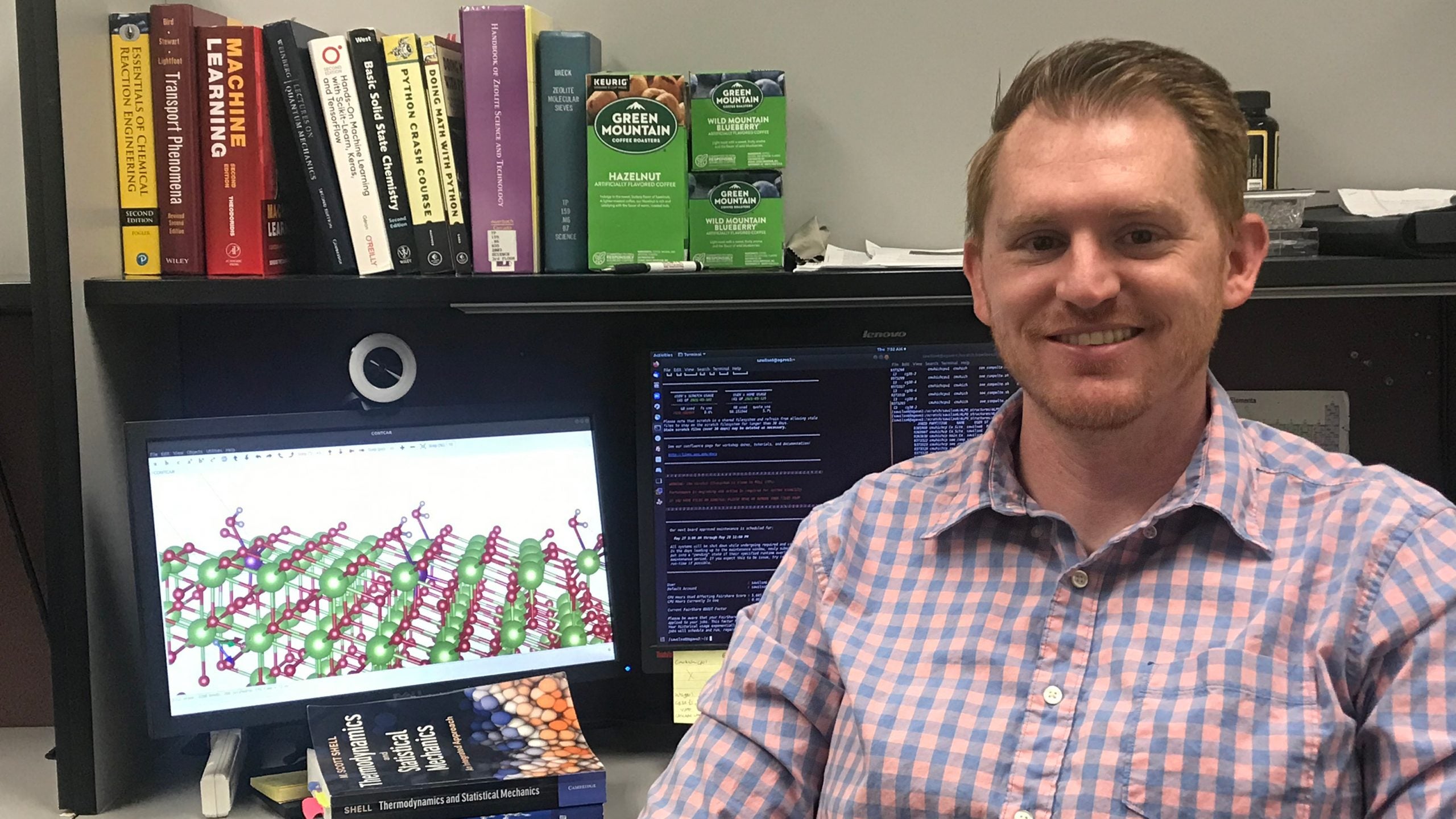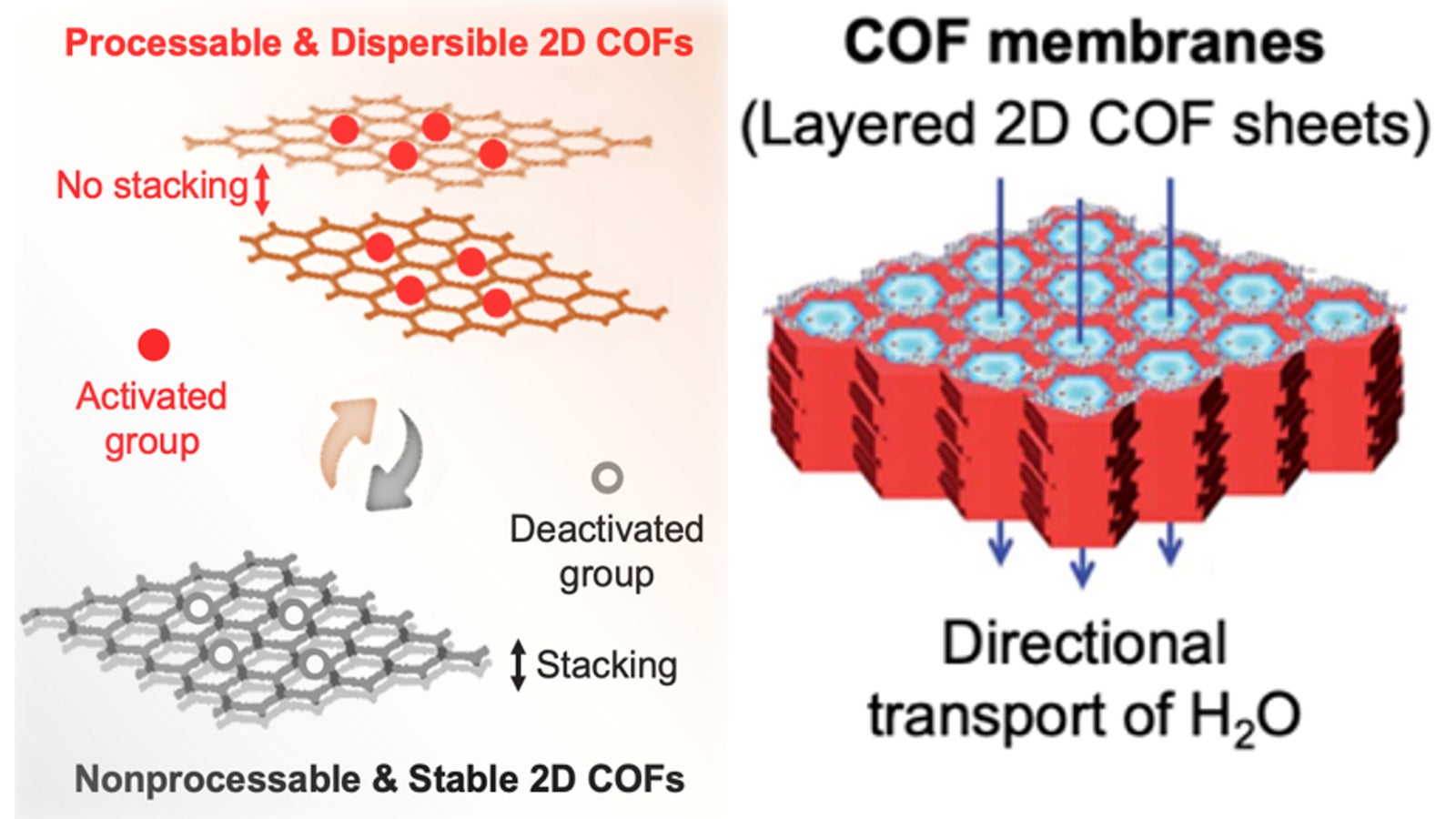Opportunity for advancement

Chemical engineering doctoral student Gabriel Nile will collaborate with NASA researchers on his work to provide spacecraft crews with improved technology to more effectively recycle water during space missions. Photo courtesy of Jordan Nile
Steven Wilson and Gabriel Nile hope to contribute to innovations that would lead to more sustainable energy systems and more effective resource conservation technologies.
The two chemical engineering doctoral students in the Ira A. Fulton Schools of Engineering at Arizona State University have reason to be optimistic about achieving those goals.
Progress they’ve made with ambitious research projects throughout their undergraduate and graduate studies has earned them opportunities to work with engineers and scientists at major federal agencies.
Wilson has been awarded a U.S. Department of Energy Computational Science Graduate Fellowship to aid his efforts to advance renewable energy generation, storage and deployment.
Wilson’s fellowship supports doctoral students in using their high-performance computing skills to help solve complex science and engineering problems.
In addition to his research at ASU, the fellowship will enable Wilson to extend his range of expertise by working for three months at a national DOE lab sometime in the next three years.
Nile has been accepted into the NASA Space Technology Graduate Research Opportunities program, which sponsors doctoral students’ participation in development of new technology to advance the nation’s space exploration missions.
He will collaborate with a NASA specialist in his field and become part of a larger group of technical experts and researchers involved in a space technology research area that aligns with his engineering interests.
Nile will also work at various NASA labs 10 weeks per year for at least three years.
Wilson’s research focuses on computational modeling of chemical systems for energy storage. He is also working to identify solid metallic oxide materials best suited to provide effective storage and to develop ways to adapt power grids to use renewable, clean energy sources.
Progress in that direction could be not only a big step for energy system sustainability but also offer a blueprint for backup systems for conventional power grids, he said, adding that such systems could help prevent the kind of widespread outage that Texas recently experienced.

Steven Wilson, a chemical engineering doctoral student in the Ira A. Fulton Schools of Engineering at Arizona State University, will work with U.S. Department of Energy researchers on his projects to develop advancements in the uses of renewable energy generation, storage and deployment. Photo courtesy of Steven Wilson
Wilson’s path into engineering started during his 10 years in the U.S. Navy. As a chief petty officer in charge of a Reactor Laboratories Division, he led a team that oversaw the chemistry and radiological controls onboard Navy nuclear vessels. As a qualified engineering officer of the watch, he supervised startups, shutdowns and maintenance of a $1 billion nuclear power plant.
When he arrived at ASU to begin undergraduate studies, Wilson already had research and leadership skills, said Christopher Muhich, an assistant professor of chemical engineering in the School for Engineering of Matter, Transport and Energy, one of the six Fulton Schools. Wilson soon joined Muhich’s lab and became a valuable contributor.
Muhich, now Wilson’s doctoral studies adviser, notes that he “has achieved some amazing things for someone just finishing his first year of PhD studies,” including publishing two research papers and being lead author on a third paper that will report on “some really cutting-edge stuff.”
Muhich points specifically to Wilson’s creative combination of computational chemistry and machine learning to discover methods for using certain materials for renewable energy storage. Those methods could be essential to making it feasible to transition from fossil fuels to green-based systems, he said.
But such a fundamental shift will mean “the reliability of power grids is going to become more dependent on increasing capacities to store solar energy, wind energy and tidal energy,” Muhich said, and Wilson’s work is looking as if it can help meet that challenge.
“I want to do something that doesn’t just make some improvements to what we have been doing,” Wilson said. “I want to push the chemistry and physics and computing further, so that we can have smart renewable energy systems that will do things better than what we’ve been doing.”
The same can be said of Nile’s research aspirations. He wants to provide new technology to boost the effectiveness of water recycling and purification aboard spacecraft.
That work will involve developing membranes capable of thoroughly separating impurities from water at a molecular level. He will focus on what he describes as “enhancing the selective transport” of water by developing new ultrathin membranes that would enable more clean water to be recovered from wastewater and even from humidity in the air inside space vehicles.

Schematics depict technology being developed by Gabriel Nile to provide recycled water to spacecraft crews while on space exploration missions. The system uses small molecular sheets to produce membranes that filter out impurities in water. Illustrations by Kailong Jin/ASU
The success of the process relies on the controlled stacking of intricately patterned molecular sheets to produce membranes that allow only water to pass through them.
Even minor improvements in the amount of water that can be recycled in space are expected to dramatically improve NASA’s ability to sustain more extensive exploration activities, Nile said.
By reducing the demand for expensive resupplies of water to spacecraft crews, missions to Mars or even farther would become more viable ventures, he said.
Nile is excited about the possibility of someday seeing technology he helped develop play an important role in space travel.
“I really like working on chemical separation processes,” he said. “So, this opportunity to collaborate with NASA experts has inspired me to go deeper into this work.”
Nile will have solid support at ASU for his research endeavors. Chemical separation and membrane filtration applications are a strength of the Fulton Schools chemical engineering program, said Kailong Jin, an assistant professor of chemical engineering and Nile’s research adviser.
“With our combined expertise in porous materials, inorganic materials and synthetic materials, I believe we can actually make some real progress in this area,” Jin said.
Beyond benefits of collaboration and mentorship that Wilson and Nile will get in their work with national labs as doctoral students, there are also potential long-term career advantages.
Muhich and Jin say leaders of national agencies scout students participating in these research programs, searching for those who show talents that match what the agencies’ labs are looking for in new employees.
“This experience will give them a big leg up in landing good opportunities at research laboratories or as university faculty members when they finish their schooling,” Muhich said.
More Science and technology

ASU-led space telescope is ready to fly
The Star Planet Activity Research CubeSat, or SPARCS, a small space telescope that will monitor the flares and sunspot activity…

ASU at the heart of the state's revitalized microelectronics industry
A stronger local economy, more reliable technology, and a future where our computers and devices do the impossible: that’s the…

Breakthrough copper alloy achieves unprecedented high-temperature performance
A team of researchers from Arizona State University, the U.S. Army Research Laboratory, Lehigh University and Louisiana State…

